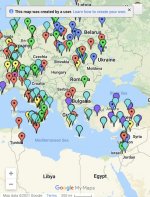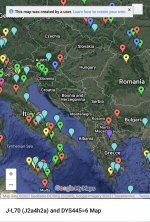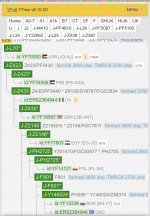Why would they want that? Given that they do in fact have a lot of DNA similar to the people who founded Rome. DNA from a Germanic invasion breaks that continuity.
Brother, that's the million dollar question. Insanity springs to mind.

One of these weirdos has his hair cut German military style in a picture, along with what looks like his version of a German military uniform.
Meanwhile, Italy was brutalized by the German invasion, aided, to our shame, by some of our Blackshirts.
Maybe it's things on the internet, the desire to identify with the more prosperous European countries of the last two centuries? Maybe it's because of the separatism in certain regions? No proper pride in being "Italian" in some regions?
To be honest, there's long been a certain feeling of superiority in some Northern Italians versus Southern Italians based a lot on sheer "looks". My own grandfather used to say horrible things about the ancestry of Southern Italians apparently, although I learned that only when I was older. My father jokingly told me that had he been alive when I got engaged to my husband there would have been hell to pay. My own second cousin was forbidden to marry a son of Southern Italian migrants. Only after five years had passed and she wouldn't look at anyone else did they relent. Meanwhile, he was infinitely too good for her, both in character and looks.

Out of that whole family he's much my favorite person.
Maybe those kinds of attitudes in certain families provided fertile ground for that kind of internet propaganda.ar
In the beginning, the Lega Nord, most dominant in the Veneto and certain parts of Lombardia, wanted to secede and join the Alpine countries, like Switzerland. Of all the idiocy, that was the worst. As if Switzerland would have them. They barely tolerate the Ticino. Try speaking Italian, one of the three "official" languages of Switzerland, in Basel. As if speaking in Venetian would make a difference. Still sounds "Italian" to them, as indeed it is.
Or, they take too seriously the fact that the Nazis declared us "Honorary Aryans" because that idiot Mussolini tied us to them. Of course, looking at Hitler and a lot of his cronies, yeah, quite a few of us look more "Aryan" than they do.

I don't know too much about Golden Dawn and whether they identify with Germans or are just their own band of loonies. Nothing would surprise me.
Ed. One of the ironies of this situation is that during the period shortly after Rome conquered the north, people like Livy were falling all over themselves in their claims to be Romans, and trying to brush aside any prior Celtic/Gallic associations. Most people are really disgusting, you know? It's just about associating yourself with what you perceive as power.
.





